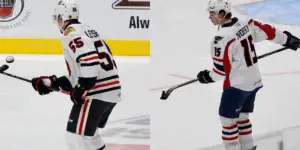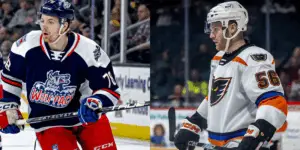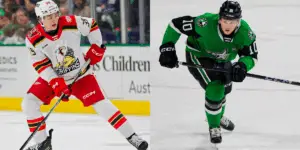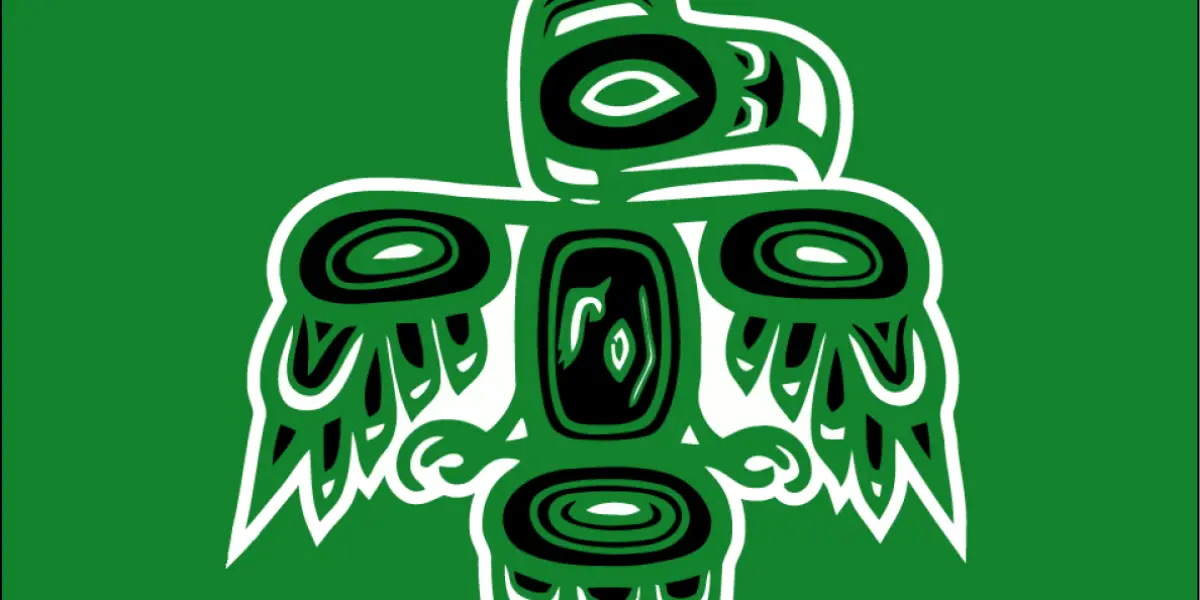
Following the brief but very successful run the Seattle Metropolitans had, their dissolution over an arena issue, at the time, seemed like an unfortunate but very surmountable problem. Pro Hockey would return to the emerald city, right? No one knew it then, but it would be over a hundred years until Seattle had another professional team. But that doesn’t mean hockey disappeared. Quite the opposite – it grew, and a lot of history was made.
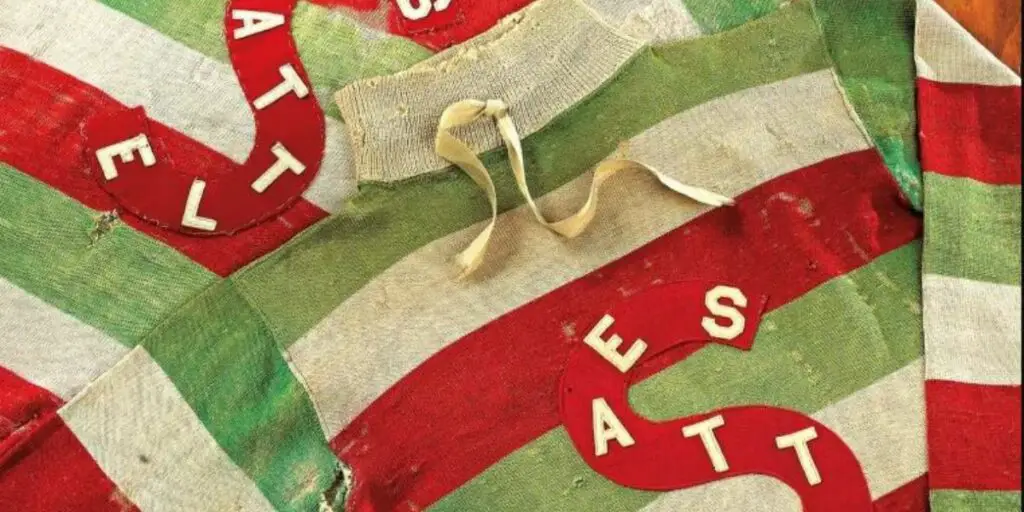
Civic Ice Arena And The PCHL
After the Metropolitans disbanded in 1924, the rest of their League would fold just a year later. The absence of professional hockey was short-lived, though. In 1927, an arena was built that would have a huge role to play and function as a conduit for the sport in the area for the next 80 years. The Civic Ice Arena would be built for about $1,000,000. This arena would house every Seattle hockey team until the WHL’s Thunderbirds moved to Kent in 1995. With this arena built, all it needed was a team.
The Seattle Eskimos were one of the founding teams of the new PCHL. A league co-founded by some familiar faces, Lester Patrick, who was a defenseman for the Metropolitans and co-founder of the now defunct PCHA, would found this new League with brother Frank. Pete Muldoon, who had coached both the Portland Rosebuds and Seattle Metropolitans, would return and aid in establishing the team and League for Seattle. The new team, the Seattle Eskimos, would be one of the founding clubs of this new League. Play would begin in 1928. The following 12 years would be turbulent. The PCHL would fold and restart, a new league, the North West Hockey League, would start and close within three years, and over this time, the team would change names from the Eskimos to the Sea Hawks to, lastly, the Olympics. The team and League would disband in 1941 at the breakout of the U.S. involvement in World War II.
The NIHL And End Of The War
During the war, an amateur hockey league was founded, named the Northwest International Hockey League. The teams in this League were based in the Pacific North West cities of Seattle, Portland, and Vancouver. They were named after their Industry sponsors and made up primarily of workers from the area’s wartime factories and some active duty military stationed in the area. In total, there were five teams. They would only compete for one season, 1943-44. Following the end of the war, the PCHL was reformed by Al Leader by combining the NIHL with the Southern California Hockey League. This final version of the PCHL would be the first true West Coast league, with Teams as far North as Victoria and Vancouver and as far South as San Diego. This new PCHL would award two teams to the City of Seattle; the Stars, which would disband at the conclusion of the first season, and the Seattle Ironmen, reformed and renamed from the Isaacson Iron Workers. This team’s jersey would serve as the inspiration for the Seattle Kraken’s 2022-23 Reverse Retro Jersey.
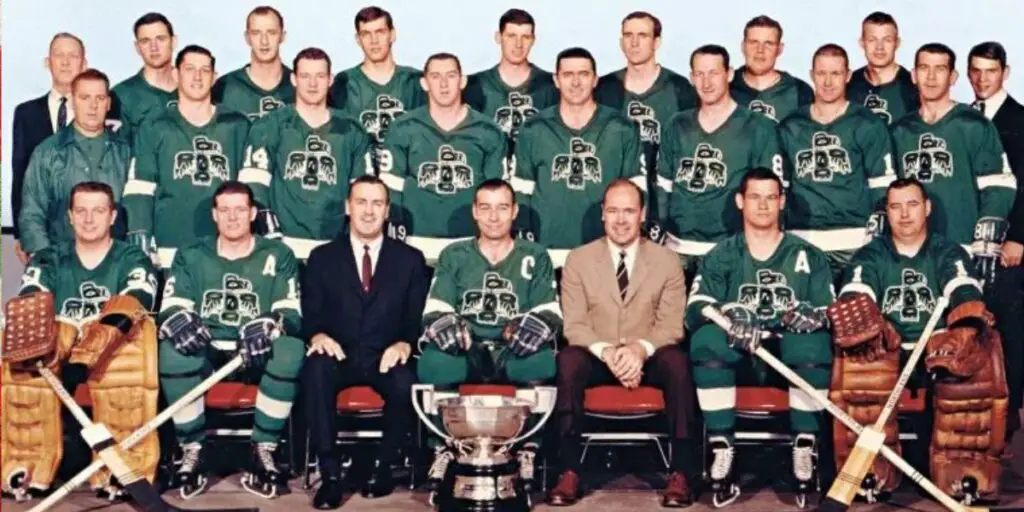
Guyle Fielder, WHL And From Bombers To Totems
The Seattle Ironmen would have immediate success, finishing in first place for the PCHL’s inaugural season. The PCHL as a whole had found the success and stability that had been missing since the first Pro League sprouted up in the early 20th Century. With this success, the PCHL would merge with the Western Canada Senior Hockey League to form the Western Hockey League in 1952. With the change in League, the Ironmen would change their name to the Seattle Bombers. The 1953-54 season would see the Seattle debut of Guyle Fielder, who would become a fixture in minor league hockey in the area until his retirement in 1973. He remains to this day the record holder for most assists, points, and games played in minor-league ice hockey. He is also the fourth all-time scorer in professional hockey behind Wayne Gretzky, Jaromir Jagr, and Gordie Howe.
With Guyle Fielder, the team would change names from Bombers to Americans and lastly to the Seattle Totems. In total, Fielder would play parts of 15 seasons and a total of 1,105 games for Seattle. In that time, he would have 323 Goals, 1099 Assists, and 1422 Total Points. Over this period, the Totems would win the WHL Championship in 1958-59 and back-to-back Titles in the 1966-67 and 1967-68 seasons. The success of the Totems, and Fielder in particular, loom large in Seattle, with the Seattle Kraken even naming the team’s “Guyle Fielder Award” after him.
NHL Expansion And The Dissolution Of The WHL
To say the WHL was successful would be an understatement. By the late 60s, the League was so successful that there started to be rumblings of them going to a Major League. This was not unnoticed by the NHL, who largely ignored the Pacific Time Zone. If the WHL were to declare itself a Major League, they could then submit to play for the Stanley Cup, a luxury the NHL alone had for half a century. This, mixed with the NHL wanting to pitch United States television contract, meant they had to expand, both to hold the WHL back and to become more desirable to the U.S. market. They would add teams to the traditional WHL markets of Los Angeles (Kings) and Oakland (Golden Seals). Another big blow to the WHL came when one of their teams, the Vancouver Canucks, would be accepted as an NHL expansion team. At this same time, the World Hockey Association was founded and started rapidly expanding to directly compete with the NHL. They would add teams to WHL Markets.
This very rapid saturation of Professional Hockey westward made it hard for the WHL to keep an audience and retain talent. The final blow would come in 1974 when the NHL granted conditional franchises to two WHL team owners, one of which was the Seattle Totems. Upon the announcement, the WHL would declare they would cease operations, and those conditional franchises for Denver and Seattle would never come to be.
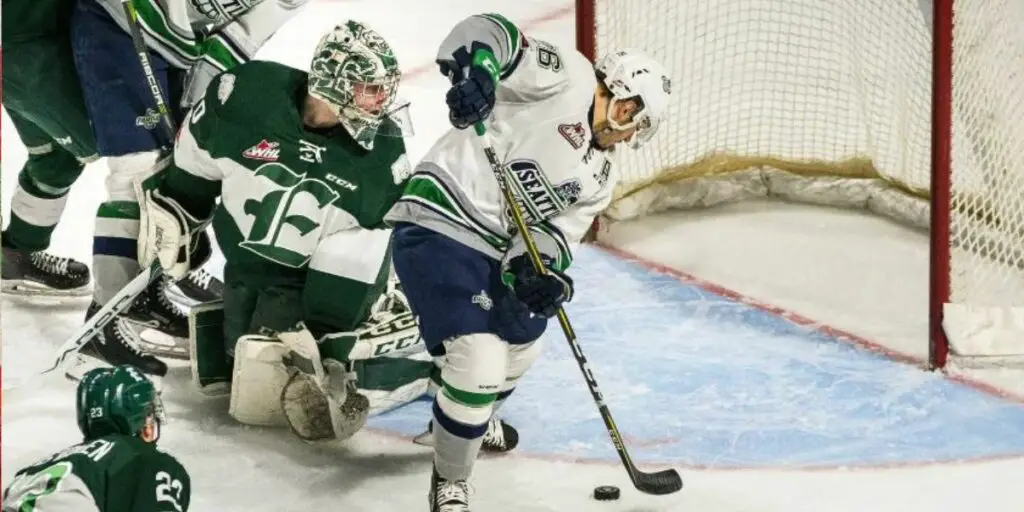
The New WHL And Arrival Of Major Junior
In 1966, a man named Bill Hunter started a Major Junior hockey league with the express purpose of challenging the eastern leagues of Ontario and Quebec. The newly founded Western Canada Junior Hockey League would spend a few seasons unsanctioned by the Canadian Amateur Hockey Association until 1970, when the Major Junior Leagues were reorganized, and the WCJHL was incorporated with the OHL and QMJHL. The League would change its name to the Western Hockey League in 1978 with the expansion into the U.S. territory.
In 1977, the Kamloops Chiefs would relocate to Seattle and changed their name to the Seattle Breakers. They would play under this moniker from 1977 until 1985 when the team was sold to new owners, and the name changed to what it is now the Seattle Thunderbirds. The Seattle Thunderbirds have been to the CHL’s Memorial Cup three times in their history, having won the Ed Chynoweth Cup (WHL Championship) twice, once in 2016-17 and again this last year in 2022-23, in addition to hosting the Memorial Cup in 1992. The team has produced quite a few notable NHL players like Patrick Marleau, Mathew Barzal, Ethan Bear, Keegan Kolesar, and Shea Theodore. With the Seattle franchise being so successful, the WHL would continue to expand and relocate teams throughout Washington State. As of today, Washington holds five out of the six teams in the WHL’s U.S. Division, with the only exception being the Portland Winterhawks. In 2003, the WHL would add a team that would develop a heated rivalry with the Thunderbirds, the Everett Silvertips.
The Silvertips are an expansion team based out of Everett, a city about a half-hour north of Seattle. Upon their admittance to the League, they would break a number of junior hockey records for an expansion team and make it all the way to the WHL Finals before losing in a sweep to the Medicine Hat Tigers. They have produced a few notable players in Ryan Murray, Radko Gudas, and Carter Hart, as well as the highly touted Anaheim Ducks prospect Olen Zellweger. This last season they celebrated their 20th anniversary.
With these two teams’ success and numerous youth hockey programs, they developed and nurtured hockey fans in the area throughout multiple failed attempts at getting an NHL franchise. In the years since the Totems and the old WHL folded, Seattle and its surrounding areas have rapidly expanded, and hockey could have been lost in the noise if it weren’t for Major Junior hockey being so successful. That success and appetite is what eventually brought the NHL to town and the Kraken with it.
Discover more from Inside The Rink
Subscribe to get the latest posts sent to your email.

